What is the Story Behind Balenciaga | History of Balenciaga
November 25, 2025

When we think of fancy clothes that try to change the norm, Balenciaga is one of the most new and important names in the world. From its start in early 1900s Spain to its today place as a global strong brand under Kering Group, Balenciaga’s story is an interesting tale of making things by hand, going against rules and changing itself.
If you have ever thought about the tale behind Balenciaga, this piece will show you the brand’s great growth from Cristóbal Balenciaga’s clever start to its present day comeback under some creative heads who keep pushing the limits of style.
The Start: Cristóbal Balenciaga- The Thinker Who Made the Brand
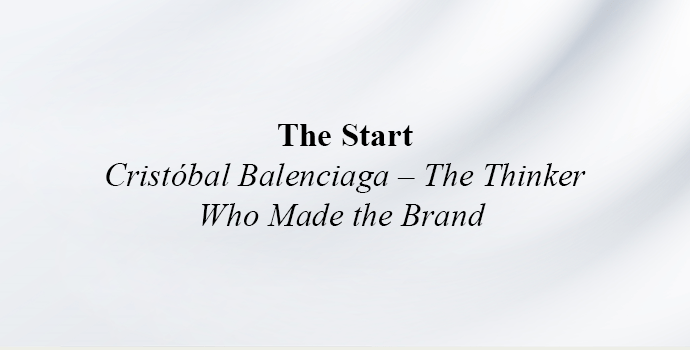
The story of Balenciaga begins with its maker, Cristóbal Balenciaga, who was born in 1895 in the small coastal town of Getaria, Spain. Growing up poor Balenciaga learnt about clothes from his mom who sewed for rich family’s. His early look at good sewing gave him a natural feel for design and detail.
Balenciaga started his first shop in San Sebastián, Spain, in 1919. His designs soon got the notice of the Spanish nobility for their perfect skill and distinct shapes. By the 1930s, his fame had increased so much that he grew to Madrid and Barcelona. But, the Spanish Civil War made him close his stores and go to Paris – a style hub of the world. In 1937, Balenciaga opened a Paris clothing shop, starting a new time in style.
Balenciaga in Paris: The Birth of a Fashion Legend
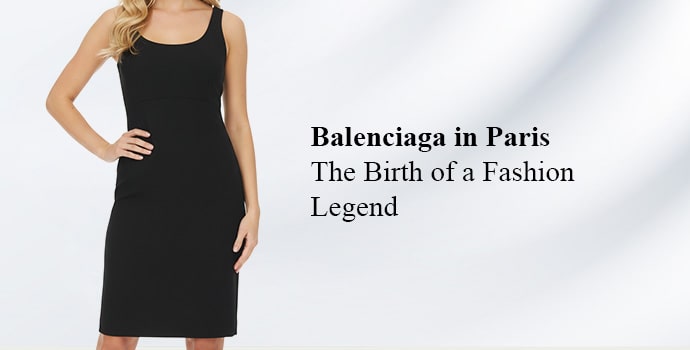
When Cristóbal Balenciaga showed his first Paris line in 1937, critics ͏and buyers were amazed. His styles went against the fads of the time – instead of highlighting the waist and shapes, Balenciaga brought in strong yet smooth forms that changed what elegance means.
His skill in building and balance got him the name “The Master of Couture.” Other designers like Christian Dior and Coco Chanel respected him a lot. Chanel once said, “Balenciaga is only a couturier in the real meaning of the term. The others are just fashion designers”.
In the 1940s and 1950s, Balenciaga’s styles changed women’s clothes. His works were built-up yet gentle, mixing Spanish romance with new simple forms. Some of his best-known ideas had:
- The Balloon Coat (1953) – has round shoulders and a shape like art.
- The Sack Gown (1957) – a new loose shape that made way for the now shift gown.
- The Cocoon Coat (1950s) – a smooth design that made a look of easy size.
- The Empire Line Dress (1950) – highlighting the chest with a tall waist and smooth fall.
These new shapes freed women from tight corsets and stiff clothes of past years, giving ease with no loss of style.
The Signature Balenciaga Style
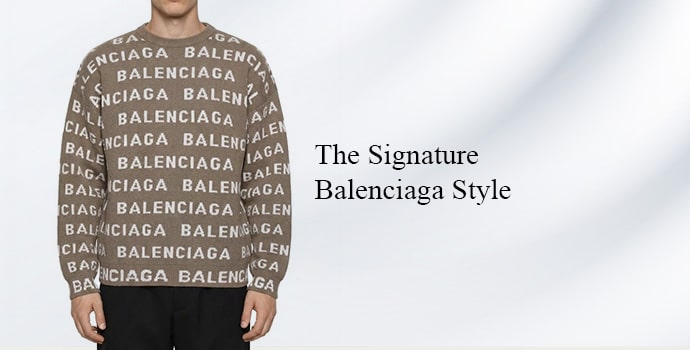
Balenciaga’s style idea focused on exactness, new ideas and skill. He would drape fabric and work with patterns on mannequins rather than working with sketches, which is an uncommon approach to garment design made possible by his exquisite tailoring that created drape and movement and meticulous style constructed in three dimensions.
Balenciaga’s main style is what can be called building simple design. He used great cloth, big sizes and plain lines to make nice formed clothes that gently hung away from the body, giving a feeling of flow and comfort. The care for detail was amazing; each stitch, fold and shape was planned to good.
Color was also vital to Balenciaga’s work. He often used a deep navy blue, black and red, as well as elaborate embroidery and lace, which derives from his Spanish culture.
Balenciaga was so ahead of his time that the collections from the 1950s serve as one of the many inspirations for the style of today’s fashion.
The House of Balenciaga After Cristóbal
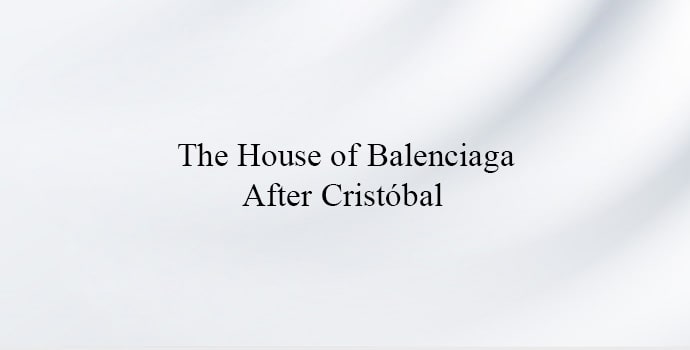
In 1968, Cristóbal Balenciaga surprised the fashion world by shutting his fashion studio. He thought that the clothing trade, which got too commercial, had hurt the art. Four years later in 1972 he died.
Following his death the story of Balenciaga swept into etching new chapters of its own. After a period of dormancy, the brand lost some of its identity in the form of an uncomfortable interim style as new creative directors struggled to find continuity through the founder. In the late 1980s and 1990s, Balenciaga was mostly known for perfumes, the most successful of which was the beloved “Le Dix” fragrance. Color was also vital in Balenciaga’s work. In the late 1990s, the brand was creatively revived and was once again positioned to be at the center of high fashion.
Nicolas Ghesquière: The Revival of Balenciaga
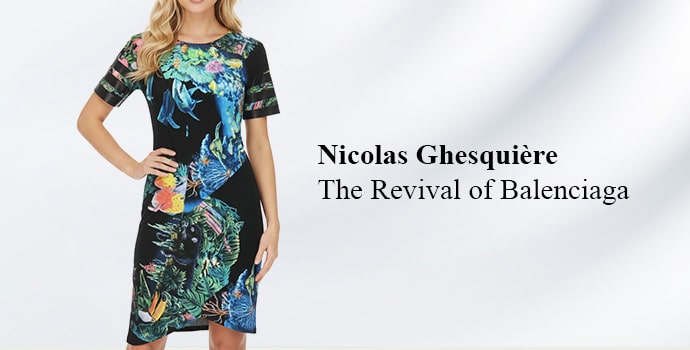
The company’s whole change started in 1997 when Nicolas Ghesquière got the job of creative leader. Ghesquière’s fall was that he took a new, future-looking way to the brand but he did not leave behind the building history shown by Cristóbal.
He brought in neat fitting, new materials and simple shapes that clicked with a fresh group of rich buyers. With his control, Balenciaga quickly grew to be linked with future style, class and sharpness.
A few of the best designs done by Ghesquière are:
- The Motorcycle Bag (City Bag) – a quick recognizable design that became a favorite of the stars.
- Sharp-shouldered blazers and futuristic dresses – a balance of strength and femininity.
- Prints printed digitally and fabric made out of neoprene – introducing new standards of what luxury could look like in this modern era.
Ghesquière’s idea changed Balenciaga to a future, fancy brand. It still honors the smart new things of a great past. He left the house in 2012, leaving behind a big creative mark.
Alexander Wang Era: Street Meets Sophistication
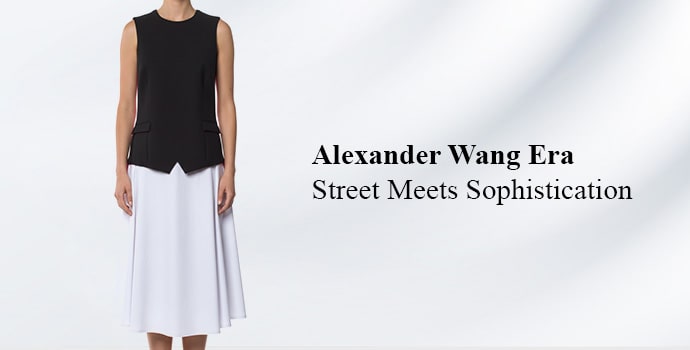
American creator Alexander Wang was made Balenciaga’s next head designer in 2013. His idea took a more simple way to useful design ways, focusing on comfort and use balanced with luxury.
Wang was able to infuse his design vision into Balenciaga by bringing in sports, urban energy with its composed intention of tailoring design with an easy modern shape. Monochromatic and dressed color palettes, functional outerwear and luxury items for daily wear helped the brand appeal to a younger consumer.
Even though he was at Balenciaga for about three years till 2016, his guide with Balenciaga helped to make sure that the brand could shift into modern luxury easily. This lets it keep going in that way.
Demna Gvasalia: The Balenciaga Revolution

The next part in the tale of Balenciaga started in 2015, when Demna Gvasalia (head of the group – Vetements) began his lead job. His job helped a big new way for the brand.
Demna’s vision was impactful, controversial and decidedly modern based on a new idea of luxury based on high fashion sports streetwear aesthetics, which resonated globally. His approach introduced the question of beauty and exclusivity that you could either view couture and daily garments as quality garments along with possible aesthetics.
Balenciaga has shown some of the most memorable modern designs in fashion history under his guidance including:
- The Triple S Sneakers – thick oversized shoes that spearheaded the sneaker trend.
- The Hourglass Blazer – exaggerated shoulders and a cinched waist referencing Cristóbal’s original silhouettes.
- Oversized Hoodies & Tees – establishing a new classification of casual luxury.
- The Le Cagole Bag – a modern spin on the classic Motorcycle bag.
Demna also introduced overtly political and cultural statements into his shows through fashion as a medium for social commentary. The way Demna skillfully brought together humor and invention, joined with skill has pushed Balenciaga to be one of today’s most known brands.
Balenciaga’s Impact on Modern Fashion
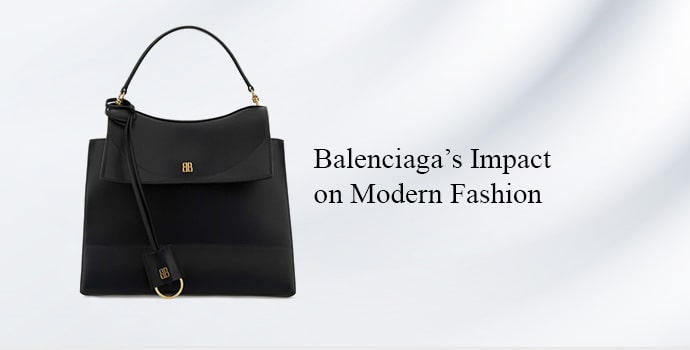
The Balenciaga story is more than just clothing – it’s redefining fashion’s scopes of boundaries. From Cristóbal’s architectural couture to Demna’s postmodern streetwear, Balenciaga has defined the paradigm of how we define style.
Important gifts to style are like this:
- New Shapes: Balenciaga’s styles have moved many makers to mess with form and size.
- Streetwear and Coutu͏re fusion: Balenciaga was the first luxury brand to pave the way for the now popular trend of high-end streetwear.
- Sustainability and Digital innovation: Balenciaga has been engaged in eco-conscious materials and digital fashion experiences, which puts it at the forefront of a rapidly developing world.
- Cultural Importance: From fashion shows in dirt to deep ideas, Balenciaga keeps pushing rules and starting talks around the world.
The Philosophy of Balenciaga Today

Today, Balenciaga means more than just fashion. It shows freedom of speaking out, new ideas and being oneself. The brand’s way of thinking tells users to be brave, not ordinary and real values that match well with today’s culture.
Demna’s Balenciaga shows the mix of joke and art. He honors Cristóbal’s skill with shape while bringing in new stories that talk to a wide world crowd. Either through big shapes, online clothes or eco-friendly ways, Balenciaga keeps changing on itself without losing its spirit.
The Enduring Legacy: Why Balenciaga Still Matters
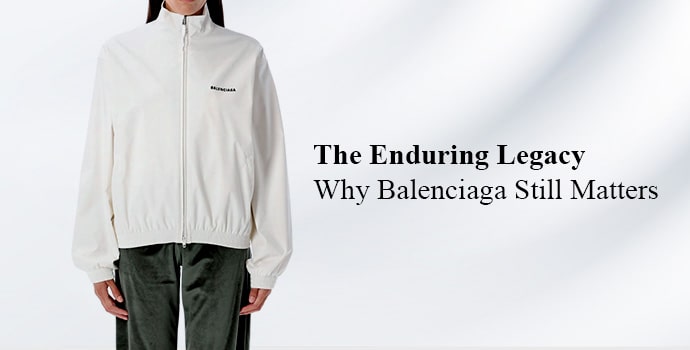
The tale of Balenciaga is really a sign of change — how a little Spanish workshop became one of the biggest fancy brands in the world. Cristóbal Balenciaga’s base of skill still molds the brand’s nature, even as it grows under fresh ideas.
What makes Balenciaga special is its bold skill to create new things while respecting its past. Every time from Cristóbal’s fancy clothes to Ghesquière’s future ideas and Demna’s casual wear change the brand’s name without losing its realness.
Balenciaga’s lasting place in today’s clothing world shows t͏hat real art does not disappear. It changes, shifts and reshapes itself over time. Whether you like its past fancy clothes or its bold new styles, Balenciaga is still a sign of brave imagination and everlasting impact.
Final Thoughts
The tale of Balenciaga is a great trip of dream, strength and change. From Cristóbal Balenciaga’s bold heart to the brand’s modern growth under Demna Gvasalia, Balenciaga has always been before its time. It stands as a sign of new ideas uniting the past and experiments in every stitch, shape and statement item.
More than a style brand, Balenciaga is a mirror of culture, art and being unique. It shows the world that real richness is not in following fads but in making them and that is what Balenciaga has done for more than 100 years.

